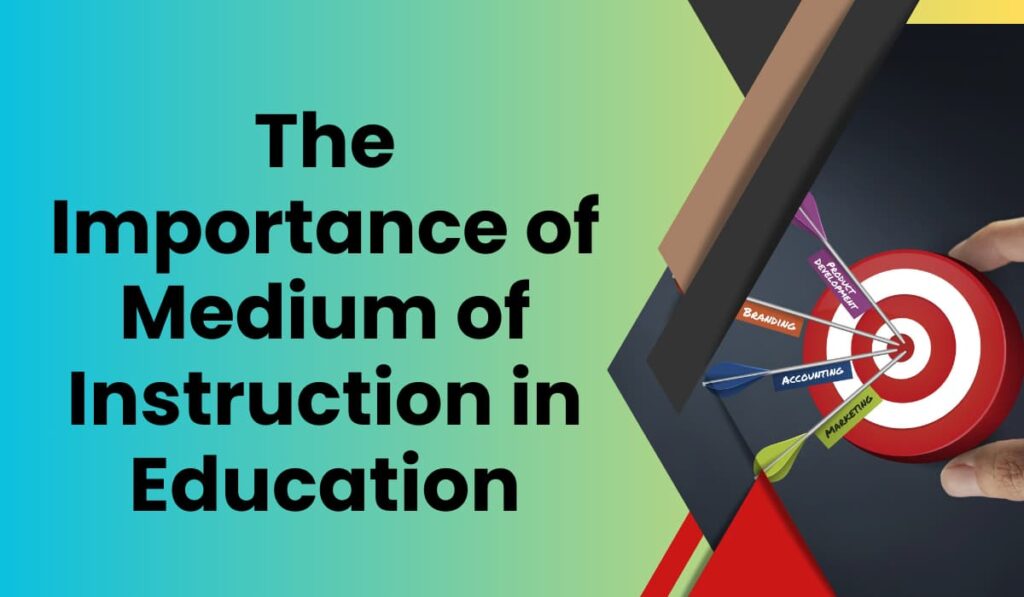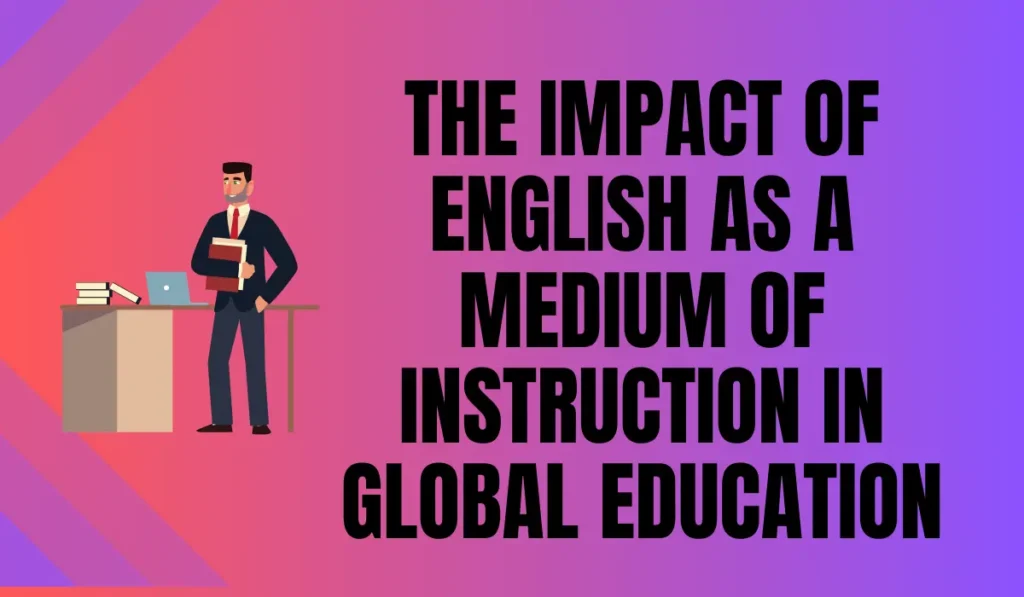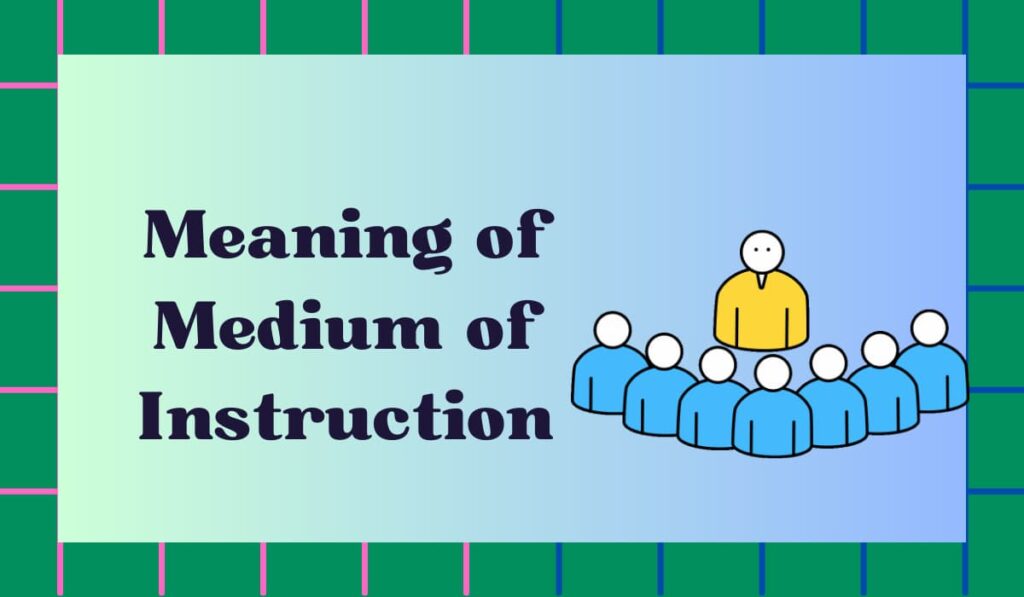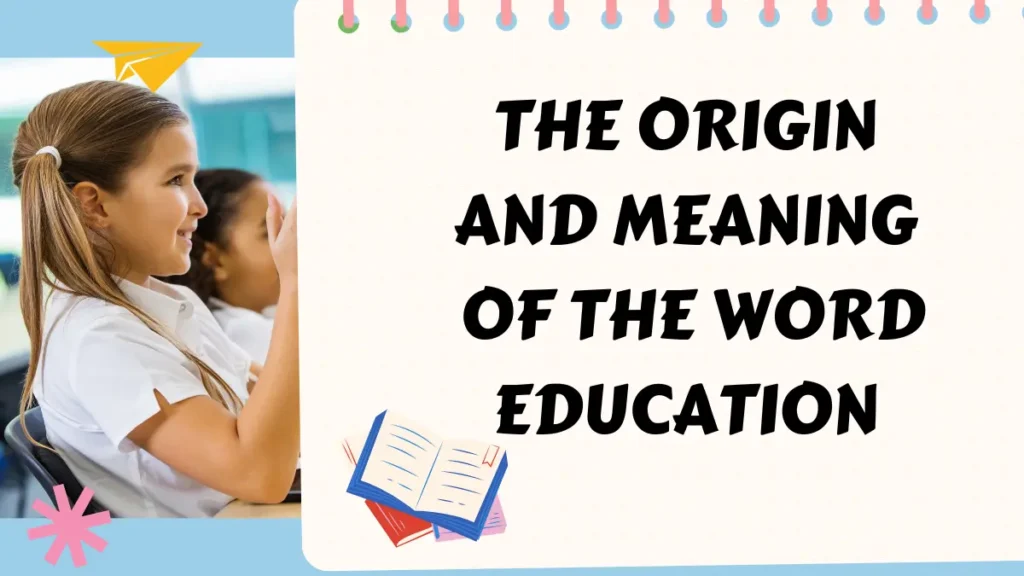The medium of instruction refers to the language in which education is delivered to students in schools and other educational institutions. It plays a crucial role in shaping the learning experience and academic outcomes of students.
The choice of medium of instruction can have significant implications for students’ understanding, comprehension, and overall educational development. It affects not only their ability to grasp and internalize the content being taught but also their language skills and communication abilities.
The choice of medium of instruction can have a significant impact on student’s learning outcomes and their overall educational experience.
The Importance of Medium of Instruction in Education

One of the primary reasons why the medium of instruction is important is its impact on student’s comprehension and learning outcomes. When students are taught in a language they are familiar with, they are more likely to understand and retain the information being taught.
This is because language proficiency is closely linked to cognitive development and academic achievement.
Furthermore, it also affects students’ overall engagement and motivation in the learning process. When students can understand and actively participate in classroom discussions, they are more likely to be motivated to learn.
On the other hand, if students struggle to comprehend the language of instruction, they may become disengaged and lose interest in their studies. This can have long-term consequences on their educational journey and future prospects.
It also has implications for teachers. When teachers are proficient in the language of instruction, they can effectively communicate and deliver lessons to their students. This enables them to create a conducive learning environment and cater to the diverse needs of their students.
Moreover, the choice of medium of instruction has broader societal implications. It can influence social cohesion and identity formation. When students are taught in their mother tongue, it helps preserve and promote their cultural heritage.
It also fosters a sense of belonging and pride in their linguistic and cultural identity.
Using a Native Language as the Medium of Instruction
In many countries, the choice of medium of instruction is a topic of debate and discussion. One of the options that often arises is using the native language as the medium of instruction.
Using a native language as the medium of instruction has several advantages:
Firstly, it allows students to fully grasp and comprehend the subject matter. When students are taught in their mother tongue, they can easily understand complex concepts and express their thoughts more effectively. This leads to better academic performance and higher levels of engagement in the classroom.
Secondly, using a native language as the medium of instruction promotes cultural preservation and identity. This helps students develop a sense of pride and belonging, fostering a positive learning environment.
Furthermore, using a native language as the medium of instruction can enhance communication and interaction among students. This creates a collaborative learning environment where students can engage in meaningful discussions and learn from each other’s perspectives.
However, there are also some drawbacks to using a native language as the medium of instruction:
One of the main challenges is the limited availability of resources and materials in the native language. Educational materials, textbooks, and reference materials may be scarce or not readily available in certain languages. This can hinder the quality of education and limit students’ exposure to a broader range of knowledge.
Another disadvantage is the potential lack of proficiency in a global language. In today’s interconnected world, proficiency in a global language such as English is highly valued. By using a native language as the medium of instruction, students may not develop the necessary language skills to compete in a global job market.
Additionally, using a native language as the medium of instruction may create a language barrier for students who come from different linguistic backgrounds. In multicultural societies, where students speak different languages at home, using a single native language as the medium of instruction can exclude and marginalize certain groups.
The Impact of English as a Medium of Instruction in Global Education

In today’s interconnected world, the importance of English as a global language cannot be overstated. English has become the lingua franca of international communication, business, and education.
As a result, many countries have adopted English as a medium of instruction in their educational systems. This shift has had a profound impact on global education, with both positive and negative consequences.
The advantage of using English as a medium of instruction is the increased access to knowledge and opportunities it provides.
English is the language of science, technology, and innovation. By teaching subjects in English, countries can ensure that their students have access to the latest research and developments in these fields.
This, in turn, can help them compete on a global scale and attract foreign investment and talent.
Moreover, English can also facilitate international collaboration and mobility. When students from different countries study in English, they can easily communicate and work together on projects and research.
This not only enhances their learning experience but also prepares them for the global job market, where cross-cultural communication and collaboration are increasingly valued.
However, the widespread adoption of English has also raised concerns about the preservation of local languages and cultures. In many countries, the use of English in education has led to a decline in the use and proficiency of indigenous languages.
The Challenges Faced by Non-Native English Speakers
In many countries, English has become the dominant medium of instruction, even in non-English speaking countries. This trend has brought about numerous challenges for non-native English speakers.
One of the main challenges faced by non-native English speakers in English-medium instruction is the language barrier. Many students who are not fluent in English struggle to understand the lessons and instructions given in class.
They may find it difficult to comprehend complex concepts and express their thoughts effectively. This language barrier can hinder their academic performance and overall learning experience.
Moreover, non-native English speakers often face difficulties in understanding the cultural context of the English language. Non-native English speakers may struggle to grasp the nuances and idiomatic expressions used in English, which can lead to misunderstandings and misinterpretations.
Another challenge is the pressure to constantly improve their English language skills. This puts non-native English speakers at a disadvantage, as they may need to invest extra time and effort in language learning, on top of their regular coursework. This additional burden can be overwhelming and may lead to feelings of frustration and inadequacy.
Furthermore, they struggle with self-confidence issues when it comes to expressing themselves in English. They may fear making mistakes or being judged by their peers and teachers. This fear of embarrassment can hinder their participation in class discussions and limit their ability to fully engage with the subject matter.
In addition to these challenges, they may also face discrimination and bias in English-medium instruction. They may be treated differently or overlooked due to their language proficiency, which can hurt their self-esteem and motivation to learn.
FAQ:
Q: What is the significance of the medium of instruction in education?
Ans: It plays a crucial role in facilitating effective learning and comprehension. The choice of medium can impact students’ understanding, engagement, and overall learning outcomes.
Conclusion
The medium of instruction plays a crucial role in education as it determines how knowledge is imparted to students. It not only affects their understanding and learning outcomes but also influences their cultural and linguistic development. The choice of medium should be based on various factors such as educational goals, linguistic diversity, and societal context. While the debate regarding the most effective medium of instruction continues, it is important to recognize that a balanced approach that considers the needs and rights of all students is essential. By providing equitable access to quality education, regardless of the medium of instruction, we can ensure that every student has the opportunity to succeed and thrive.


